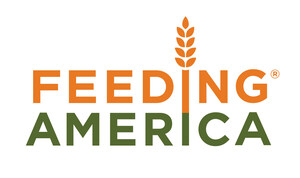1 In 6 Americans at Risk of Hunger
CHICAGO, Nov. 15, 2010 /PRNewswire-USNewswire/ -- The U.S. Department of Agriculture's Economic Research Service (USDA) reported today that more than 50 million Americans, including more than 17 million children, are food insecure – meaning they lack consistent access to a nutritious, well-balanced diet. The findings are based on data collected by the government in December, 2009.
The report, Household Food Insecurity in the United States, is a sobering snapshot of the pervasiveness of hunger in our nation. The report shows that child hunger remains critically high. Nearly 1 in 4 children was at risk of hunger in 2009.
"While far too many Americans are food insecure, this data provides strong evidence that the safety net helped many families at risk of hunger in 2009. This was largely due to improvements to SNAP (The Supplemental Nutrition Assistance Program, formerly known as Food Stamps) and other programs in the economic recovery package and the ongoing support for the emergency food system," said Vicki Escarra, president and CEO of Feeding America. "Despite continued increases in unemployment, federal nutrition and charitable food assistance programs responded effectively to the rising need and prevented millions of additional Americans from going hungry."
"The report also confirms that we cannot afford to wait another year before addressing our child hunger crisis," Escarra said. "When Congress returns to Washington this week, they have a critical opportunity to reduce child hunger by strengthening programs that increase low-income children's access to healthy meals. Congress must not adjourn without passing the Child Nutrition bill this year."
The Senate passed the Healthy, Hunger-Free Kids Act in August, and the bill now awaits action by the House of Representatives.
Food insecurity increased only slightly in 2009, compared to a sharp increase in the report issued one year ago, which reflected the first full year of the recession. Escarra credited greater enrollment in SNAP and the increased SNAP benefit levels provided in the economic recovery package, as well as lower food inflation, with protecting families from hunger in 2009.
"While the SNAP benefit increase was intended to be temporary, it was also desperately needed," Escarra continued. "Normal benefit levels are not enough to last a family through the month, and in the long-term, real progress against hunger will require a permanent increase in SNAP benefits."
The sharp rise in food insecurity rates during the recession mirror the findings in Feeding America's report Hunger in America 2010, which showed that the number of people seeking emergency food assistance each year through the Feeding America network of food banks has increased a staggering 46 percent since 2006, from 25 million to 37 million.
"If Feeding America food banks are to sustain their level of support to those who continue to be in need of emergency food assistance, it will require a commitment by the Federal government to maintain the same level of food and funds provided through The Emergency Food Assistance Program during fiscal year 2010," Escarra said.
"Equally important, as we look ahead to the 2012 Farm Bill, resources must be made available to improve SNAP outreach efforts, eliminate barriers to SNAP participation, and increase SNAP benefit levels."
In addition to Feeding America's role as the largest provider of emergency food, the organization also is a major partner of federal and state government in enrolling people in SNAP and sponsoring Child Nutrition Programs. SNAP and Child Nutrition Programs are the principle means to alleviate the impacts of hunger and child food insecurity.
The full report can be found at http://www.ers.usda.gov/Briefing/FoodSecurity/.
About Feeding America
Feeding America provides low-income individuals and families with the fuel to survive and even thrive. As the nation's leading domestic hunger-relief charity, our network members supply food to more than 37 million Americans each year, including 14 million children and 3 million seniors. Serving the entire United States, more than 200 member food banks support 63,000 agencies that address hunger in all of its forms. For more information on how you can fight hunger in your community and across the country, visit http://www.feedingamerica.org. Find us on Facebook at facebook.com/FeedingAmerica or follow our news on Twitter at twitter.com/FeedingAmerica.
Contact: Ross Fraser
312.641.6422
SOURCE Feeding America
WANT YOUR COMPANY'S NEWS FEATURED ON PRNEWSWIRE.COM?
Newsrooms &
Influencers
Digital Media
Outlets
Journalists
Opted In





Share this article